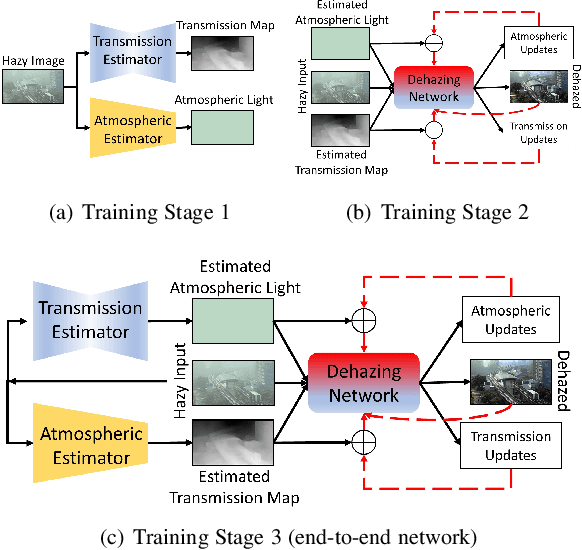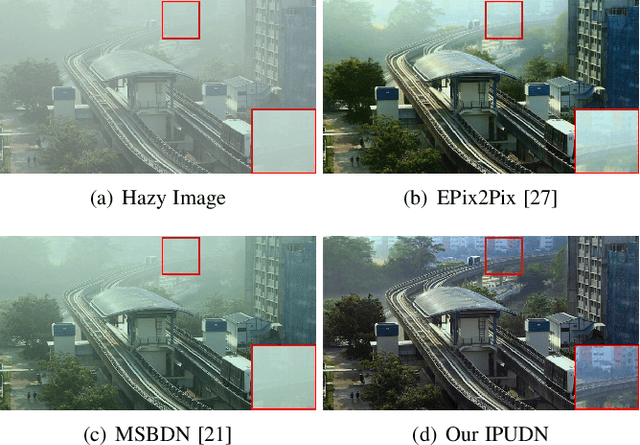Sobhan Kanti Dhara
Transmission Map and Atmospheric Light Guided Iterative Updater Network for Single Image Dehazing
Aug 04, 2020



Abstract:Hazy images obscure content visibility and hinder several subsequent computer vision tasks. For dehazing in a wide variety of hazy conditions, an end-to-end deep network jointly estimating the dehazed image along with suitable transmission map and atmospheric light for guidance could prove effective. To this end, we propose an Iterative Prior Updated Dehazing Network (IPUDN) based on a novel iterative update framework. We present a novel convolutional architecture to estimate channel-wise atmospheric light, which along with an estimated transmission map are used as priors for the dehazing network. Use of channel-wise atmospheric light allows our network to handle color casts in hazy images. In our IPUDN, the transmission map and atmospheric light estimates are updated iteratively using corresponding novel updater networks. The iterative mechanism is leveraged to gradually modify the estimates toward those appropriately representing the hazy condition. These updates occur jointly with the iterative estimation of the dehazed image using a convolutional neural network with LSTM driven recurrence, which introduces inter-iteration dependencies. Our approach is qualitatively and quantitatively found effective for synthetic and real-world hazy images depicting varied hazy conditions, and it outperforms the state-of-the-art. Thorough analyses of IPUDN through additional experiments and detailed ablation studies are also presented.
Across-scale Process Similarity based Interpolation for Image Super-Resolution
Mar 20, 2020



Abstract:A pivotal step in image super-resolution techniques is interpolation, which aims at generating high resolution images without introducing artifacts such as blurring and ringing. In this paper, we propose a technique that performs interpolation through an infusion of high frequency signal components computed by exploiting `process similarity'. By `process similarity', we refer to the resemblance between a decomposition of the image at a resolution to the decomposition of the image at another resolution. In our approach, the decompositions generating image details and approximations are obtained through the discrete wavelet (DWT) and stationary wavelet (SWT) transforms. The complementary nature of DWT and SWT is leveraged to get the structural relation between the input image and its low resolution approximation. The structural relation is represented by optimal model parameters obtained through particle swarm optimization (PSO). Owing to process similarity, these parameters are used to generate the high resolution output image from the input image. The proposed approach is compared with six existing techniques qualitatively and in terms of PSNR, SSIM, and FSIM measures, along with computation time (CPU time). It is found that our approach is the fastest in terms of CPU time and produces comparable results.
 Add to Chrome
Add to Chrome Add to Firefox
Add to Firefox Add to Edge
Add to Edge